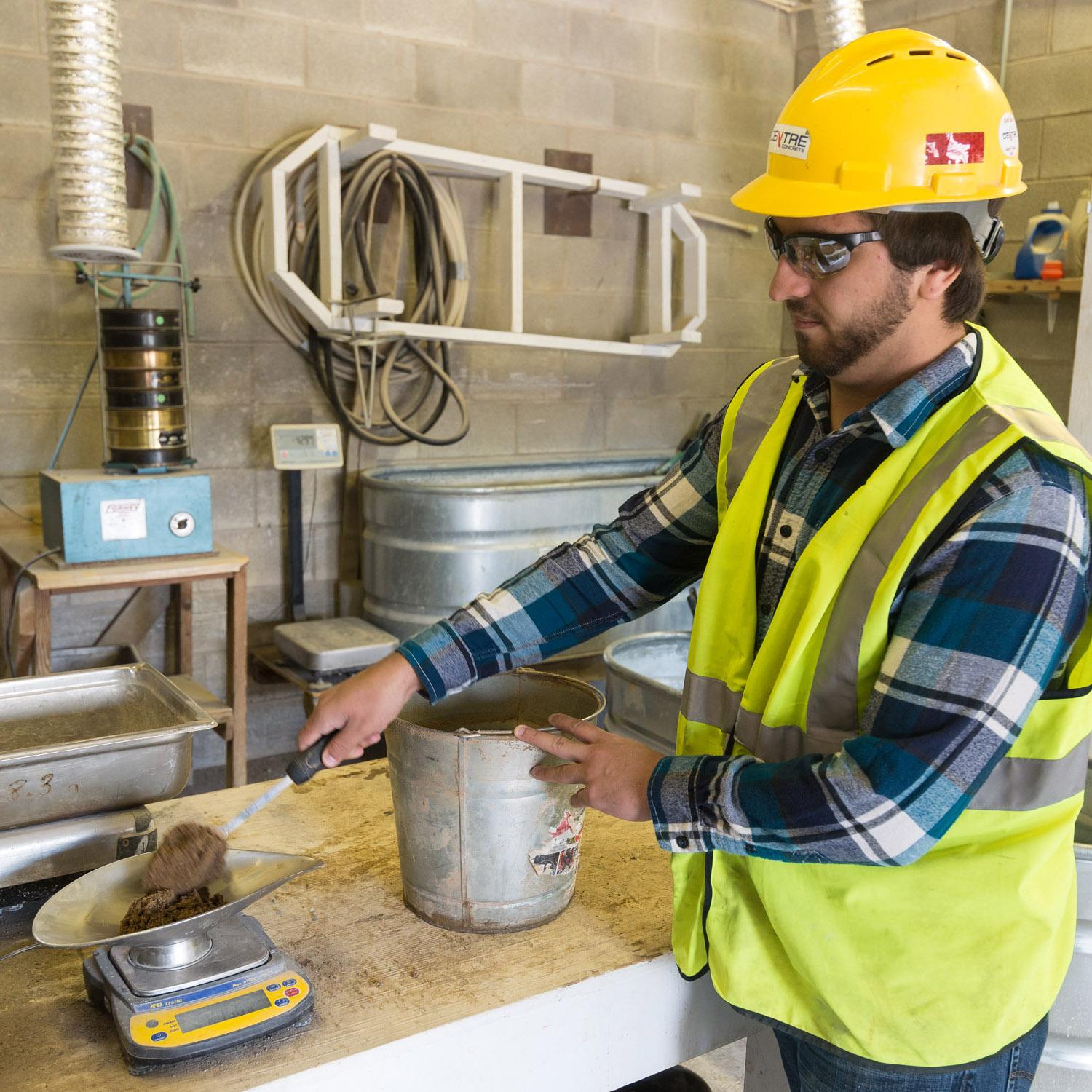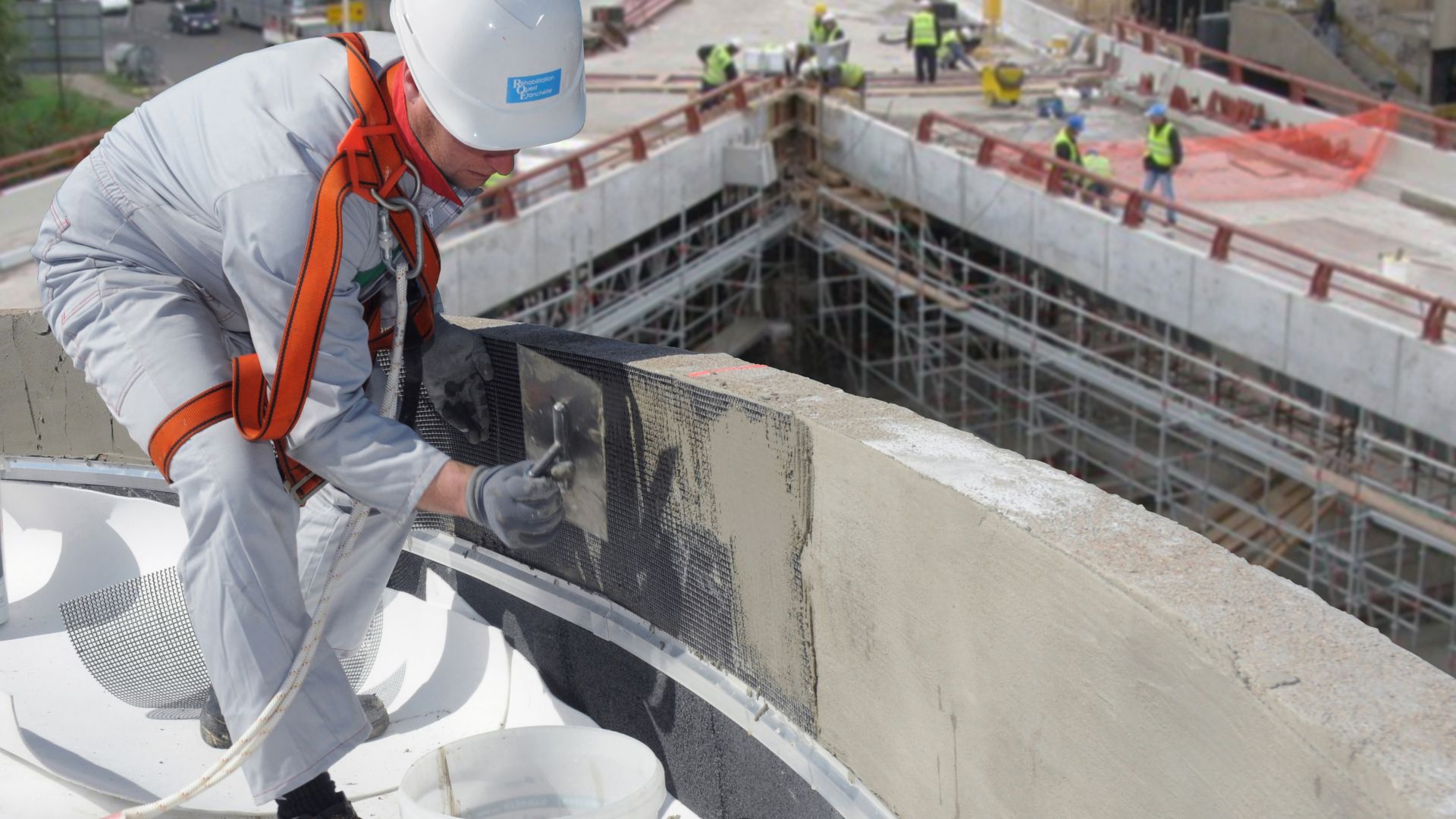Top 10 Things to Know Before Hiring Concrete Contractors Rancho Cucamonga
Top 10 Things to Know Before Hiring Concrete Contractors Rancho Cucamonga
Blog Article
The Crucial Function of Concrete Foundation in Structural Stability and Longevity
When it pertains to developing a residential or commercial property, the foundation is more critical than you could believe. Concrete structures provide unequaled stamina and sturdiness, guaranteeing your framework can stand up to numerous environmental challenges. Without a strong base, you risk possible issues like changing or fracturing, which can jeopardize security and worth. Understanding the subtleties of concrete foundations might be the secret to protecting your investment for many years to find. What should you think about next?
Comprehending the Relevance of Concrete Foundations
Concrete foundations are vital to the general stability of any framework, as they give the essential support required to hold up against numerous tons and environmental problems. When you think of constructing a home or an industrial space, the structure is the initial thing you need to take into consideration. It functions as an obstacle versus moisture, shielding your building from water damage. A well-placed concrete structure additionally stops settling and changing, which can lead to splits in walls and floors. You'll want to guarantee that the foundation is correctly created and strengthened, as this impacts the longevity of your building. Furthermore, a strong structure can enhance power efficiency by minimizing air leakages. Keep in mind, disregarding the importance of a concrete foundation can result in pricey fixings down the line. So, investing in a top quality structure upfront is important for the stability and longevity of your framework.
Advantages of Concrete Structures for Architectural Honesty
While lots of elements contribute to a structure's architectural honesty, concrete foundations use unmatched resilience and stamina. You'll value that concrete can withstand extreme weather, withstanding both moisture and temperature fluctuations. This strength means your framework is much less most likely to experience cracking or shifting in time, which can compromise its safety.Additionally, concrete's intrinsic weight gives a solid base, protecting against activity throughout natural occasions like earthquakes or floods. When you pick a concrete structure, you're likewise selecting reduced upkeep; unlike wood, it won't rot or attract parasites, saving you money and time in repairs.Moreover, concrete's fire resistance provides included safety, guaranteeing your framework can withstand high temperatures without considerable damage. Generally, investing in a concrete foundation indicates you're prioritizing the lasting security and honesty of your structure, making it a sensible choice for any building job.
Common Sorts Of Concrete Foundations
When it involves building foundations, recognizing the usual types of concrete foundations can help you make informed selections for your project. One of the most widespread types include slab-on-grade, crawl space, and full cellar foundations.A slab-on-grade foundation is a simple, cost-efficient option, where a thick concrete piece is poured straight on the ground. This type functions well in warm climates, as it lessens warmth loss.Crawl area structures raise the home slightly over ground, permitting ventilation and accessibility to pipes and electrical systems. This design can help protect against wetness issues.Full cellar structures provide extra living or storage room while supplying exceptional structural support. They call for more excavation and are typically utilized in colder climates to stop frost heave.
Factors to Think About When Creating a Concrete Structure

Ideal Practices for Putting Up Concrete Foundations
When you're mounting a concrete structure, correct site prep work is vital to guarantee security (WCGE commercial concrete). You'll likewise require to understand support techniques to boost strength and longevity. Don't forget the healing process, as it plays an essential duty in attaining a strong structure.
Website Prep Work Value
It may seem straightforward, appropriate site preparation is important for ensuring a solid and resilient concrete structure. Start by clearing the location of any type of debris, plants, or organic product that can jeopardize the foundation's integrity. Next off, examine the soil type and compaction; you may need to dig deep into or add materials to produce a secure base. Level the ground to ensure even weight circulation and prevent settling concerns in the future. Setting up proper water drainage systems is also necessary to stop water build-up, which can deteriorate the structure gradually. Lastly, mark out the foundation's measurements accurately to assist the pouring procedure. By adhering to these actions, you'll establish the stage for an effective concrete foundation that stands the examination of time.
Reinforcement Strategies Discussed
Once the site is appropriately prepared, the following action in ensuring a tough concrete foundation involves carrying out effective support methods. You should begin by making use of steel rebar, which supplies tensile toughness and aids prevent splitting. Lay the rebar in a grid pattern, making certain it's raised making use of spacers to keep appropriate coverage. Additionally, consider using wire mesh for additional assistance, especially in areas based on heavy loads. Don't neglect to connect the rebar intersections firmly with wire. For larger foundations, fiber support can enhance durability, lowering the threat of shrinking cracks. Always comply with local building codes and guidelines to make certain conformity. By applying these support techniques, you'll greatly boost your structure's toughness and long life, laying a strong groundwork for your framework.
Healing Process Fundamentals
To assure your concrete structure remedies properly, it is necessary to keep ample moisture and temperature level problems immediately after putting. Start by covering the surface area with a wet burlap or plastic sheeting to keep wetness. This maintains the concrete hydrated, preventing splits and ensuring toughness. You should additionally keep track of the temperature level; suitable curing conditions are in between 50 ° F and 90 ° F. If it's as well hot, haze the surface on a regular basis to avoid rapid dissipation. For chilly weather condition, take into consideration using protecting blankets to maintain heat. Objective for a curing duration of at the very least 7 days, as this is crucial for optimum stamina development. By complying with these finest techniques, you'll improve your structure's durability and long life, guaranteeing architectural integrity for years ahead.
Maintenance of Concrete Foundations for Durability
To keep your concrete foundation strong and enduring, regular examinations are crucial. You need to likewise guarantee reliable water drainage services remain in place to stop water damage. If you identify any splits, resolving them without delay will save you from bigger troubles down the line.

Regular Inspections and Evaluations
While normal inspections and analyses might feel like a duty, they're necessary for maintaining the integrity of your concrete foundation. By routinely looking for fractures, changes, or indications of wear, you can catch possible problems before they intensify into costly repair services. Seek any type of water merging around the foundation or uncommon settling, as these can indicate underlying troubles. It's additionally smart to monitor any changes in your home's framework, like doors that stick or windows that don't open smoothly. Maintaining a record of your examinations assists track adjustments with time, allowing for aggressive maintenance. Inevitably, these assessments ensure your structure remains steady, supporting the longevity and safety of your entire framework. Do not neglect this essential facet of homeownership!
Efficient Drainage Solutions
Routine examinations can disclose issues like drain problems that may endanger your concrete structure's stability. To avoid water buildup, assure your gutters and downspouts straight water away from the foundation. Installing French drains can properly redirect surface area and groundwater, lowering pressure on your foundation walls. Additionally, grading the dirt around your home aids assure that water streams away, as opposed to merging near your foundation.Consider using sump pumps in Check This Out locations prone to flooding, as they actively get rid of excess water. Consistently look for obstructions in drainage systems and clear them promptly. You'll shield your structure's stability and longevity by taking these positive procedures. Remember, efficient water drainage services are vital for preserving a strong, sturdy concrete foundation.
Prompt Split Repairs
When you discover cracks in your concrete structure, addressing them without delay is necessary for maintaining its durability. Tiny fractures can swiftly develop into bigger problems, jeopardizing the structural honesty of your home. Consistently examine your structure for indications of damage, such as horizontal or upright splits. If you identify any kind of, do not wait-- fix them instantly. You can utilize epoxy injections or concrete patching compounds, which are effective for sealing fractures. Always follow the manufacturer's directions and take into consideration consulting a professional for considerable damages. Bear in mind, timely repairs not just improve your structure's sturdiness yet likewise conserve you money in the future by protecting against extra comprehensive repair work down the line. Stay positive, and your foundation will certainly stay strong and safe.
Attending To Usual Issues With Concrete Foundations
Concrete structures can encounter different problems with time, making it vital to identify and resolve them quickly. Among the most usual troubles is cracking, which can happen because of temperature variations or resolving dirt. If you see cracks, it's important to evaluate their dimension and deepness; tiny splits can often be sealed, while bigger ones may require expert evaluation.Water invasion is an additional major problem. Excess moisture can bring about mold and mildew growth and architectural deterioration. Assurance proper water drainage around your structure to reduce this risk. Furthermore, try to find indications of shifting or bowing wall surfaces, as this can suggest underlying issues with your structure's stability.Regular assessments are basic to capture these issues early. If you identify any type of worrying signs, do not hesitate to get in touch with a over at this website structure expert. By staying proactive, you can maintain the honesty and long life of your concrete structure, guaranteeing your home stays secure and safe and secure.
Regularly Asked Concerns
How Does Dirt Type Affect Concrete Structure Performance?
Dirt kind substantially influences concrete structure performance. If you have actually got expansive clay, for more helpful hints instance, it can trigger moving and cracking. Sandy soil could cause settling. Comprehending your dirt helps guarantee a secure structure.
Can Concrete Foundations Be Fixed if Damaged?
Yes, you can repair damaged concrete structures. Depending on the degree of the damages, methods like epoxy injection or piece jacking can restore stability. It's best to consult a professional for efficient remedies.
What Is the Typical Lifespan of a Concrete Foundation?
A concrete foundation normally lasts 30 to 100 years, relying on variables like soil conditions, environment, and maintenance. You'll wish to maintain an eye on it to assure it remains healthy throughout its lifespan.
Exist Choice Materials to Concrete for Foundations?
Yes, there are alternatives to concrete for structures, like steel, lumber, and even recycled materials. Each alternative has special advantages and drawbacks, so you need to consider your job's certain requirements when picking the right material.
How Does Environment Influence Concrete Structure Durability?
Environment significantly influences concrete structure sturdiness (West Coast General Engineering industrial concrete Rancho Cucamonga). Severe temperature levels, moisture, and freeze-thaw cycles can damage the material, causing fractures and architectural concerns. You should think about local environment conditions when planning your structure to ensure long-term efficiency
Report this page